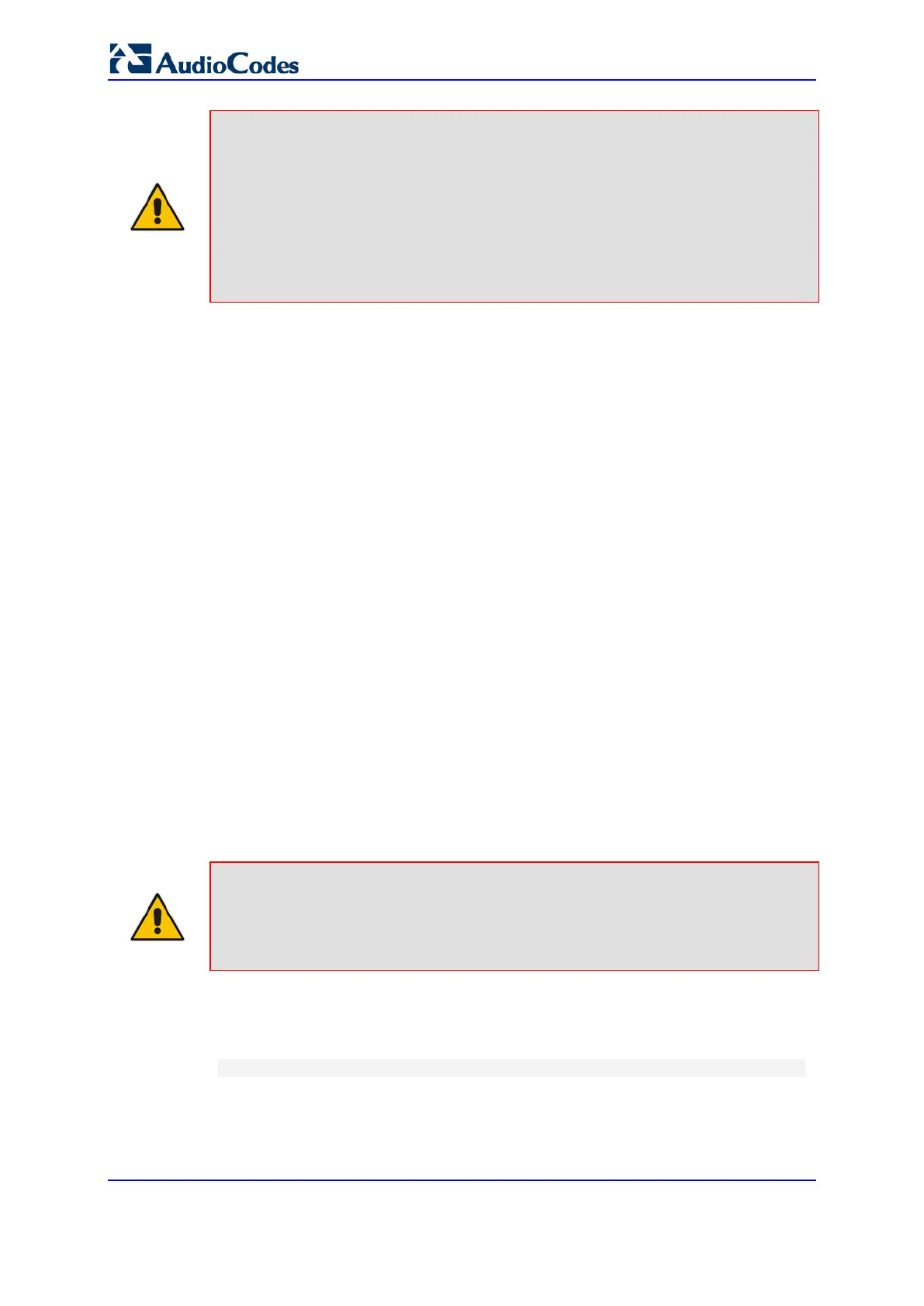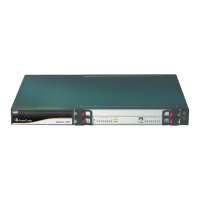User's Manual 216 Document #: LTRT-89730
Mediant 3000
Note:
• The RTP port must be different from ports configured for SIP signaling traffic (i.e.,
ports configured for SIP Interfaces). For example, if the RTP port range is 6000 to
6999, the SIP port can either be less than 6000 or greater than 6999.
• The base UDP port number (BaseUDPPort parameter) must be greater than the
highest UDP port configured for a SIP Interface (see Configuring SIP Interfaces on
page 337). For example, if your highest configured UDP port for a SIP Interface is
6060, you must configure the BaseUDPPort parameter to any value greater than
6060.
15.4 Event Detection and Notification using X-Detect
Header
The device can detect certain events in the media stream (for SBC and Gateway calls) and
notify of their detection to a remote application server, using the SIP X-Detect header. The
request for event notification is done by the application server when establishing a SIP
dialog (i.e., INVITE message) or during an already established call (SBC, IP-to-Tel, or Tel-
to IP) using a re-INVITE message.
The device can detect the following event types:
Answering Machine Detection (AMD): Detects events that are related to the AMD
feature. AMD detects whether an answering machine or live voice has answered the
call. It can also be used to detect silence, or the beep sound played by an answering
machine to indicate the end of the greeting message after which a voice message can
be left. For more information on AMD, see ''Answering Machine Detection (AMD)'' on
page
221.
Call Progress Tone (CPT): Detects whether a specific tone, defined in the installed
CPT file is received from the call. It can be used to detect the beep sound played by
an answering machine (as mentioned above), Special Information Tones (SIT) which
indicate call failure with a recorded announcement describing the call failure, and the
busy, reorder and ring tones.
Fax/modem machine: Detects whether a fax has answered the call (preamble, CED,
CNG, and modem).
PTT: Detects the start and end of voice.
Notes:
• Currently, PTT is supported only for Gateway calls.
• Fax and SIT event detection is applicable only to Gateway calls.
• Event detection on SBC calls is supported only for calls using the G.711 coder.
The X-Detect header is used for event detection as follows:
X-Detect header in the INVITE message received from the application server
requesting a specific event detection:
X-Detect: Request=[event type to detect]
X-Detect header in the SIP response message -- SIP 183 (for early dialogs) or 200 OK
(for confirmed dialogs) -- sent by the device to the application server specifying which
of the requested events it can detect (absence of the X-Detect header indicates that
the device cannot detect any of the events):

